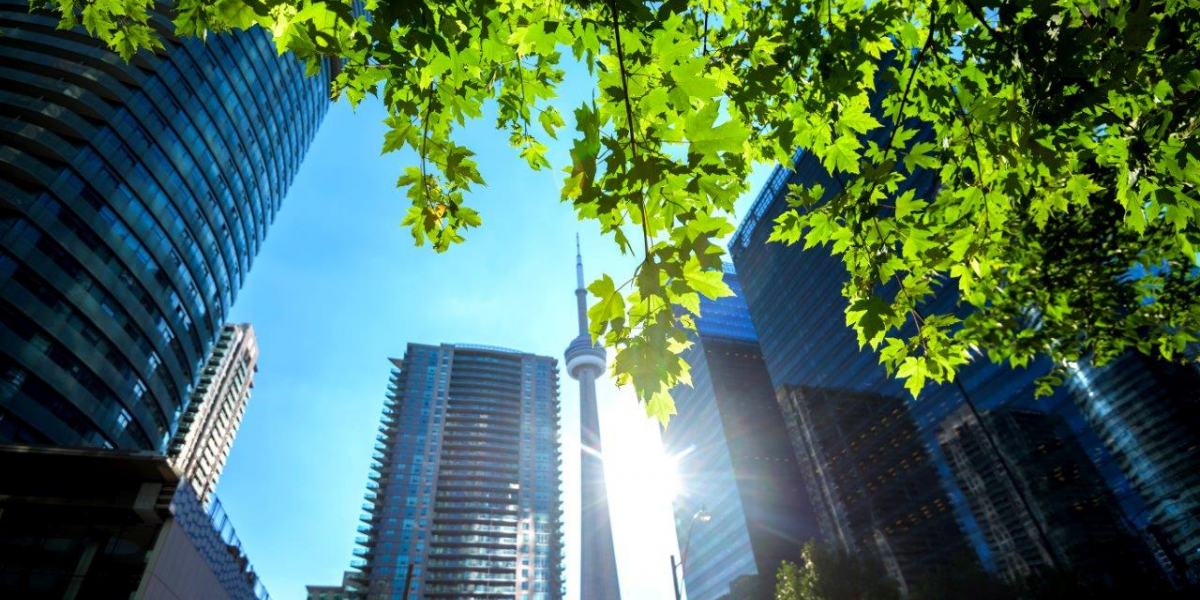
June 20, 2023
By Talha Awan and Christine Desrochers
Urban parks and greenspaces are critical for climate resilience and thriving communities. This week we are attending the 2023 Park People Conference with the theme, “Hope in Action: Park Solutions for Thriving Cities”, which is a great opportunity to advance nature-based solutions for some of our most urgent problems.
This is the first of a blog series that will continue this discussion by exploring how urban greenspaces can combat climate change and protect human health. With another hot summer already underway, our first topic is urban heat islands and how parks and vegetation can counteract this deadly phenomenon.
Heat waves cause thousands of deaths throughout the world and climate change is causing these numbers to rise. Over 20,000 people died as a result of the 2022 heat wave in Europe. In British Columbia, the 2021 western heat dome caused 619 deaths in less than one week.
Extreme heat is now the leading cause of weather-related illness and death in Canada, impacting vulnerable populations the most, including children, the elderly, those with pre-existing conditions, and low-income households without access to air conditioning.
The next five years are projected to be the warmest ever recorded as greenhouse gases and El Niño are predicted to send temperatures soaring. The effects of a much warmer climate will be felt most severely in cities prone to the urban heat island effect.
Millions of Canadians are at risk. This represents an urgent health crisis which we must take action to prevent.
Consider black asphalt on a hot summer day - it absorbs heat from the sun and radiates it back to the surroundings. This is the main cause of the urban heat island effect. Pavements and buildings trap heat and increase the temperature of the entire city. On particularly hot days, the temperatures of urban landscapes can be as much as 12℃ warmer than surrounding rural regions.
Extreme heat is an economic burden on healthcare systems as it leads to a range of heat-related illnesses - including heat stroke, heart disease, and respiratory disorders such as asthma - and exacerbates pre-existing health conditions. Heat islands also increase air conditioning use, which raises electricity costs and peak electricity demand. Surplus demand is often met with dirty carbon-intensive power plants, such as coal or natural gas, thus contributing to air pollution and increased GHG emissions.
Extreme heat events are exacerbated by heat islands. Without adequate action, the costs of extreme heat will compound in cities and Canadians will pay the price.
Parks and urban vegetation can tackle the adverse impacts of urban heat islands and extreme heat. Urban greening mitigates heat islands and can include street trees, urban forests, parks, green roofs, gardens, green walls, and other green infrastructure. Trees help cool the environment by providing shade. Vegetation also cools the air through evapotranspiration. In areas that have competing demands for space, strategies such as green roofs, vertical greening, and linear parks and trails can also be implemented.
Increasing the vegetative cover in a city simultaneously lowers outdoor temperatures and reduces the demand for building cooling. Urban greening - which has been successfully implemented in cities across Canada such as Toronto’s eco-roof incentive program and Laval’s demineralization and tree planting project - is therefore a solution that promotes both healthcare and energy cost savings.
In addition to resilience against extreme heat, urban parks and vegetation provide benefits for recreation, physical and mental well-being, flood mitigation, cleaner air, as well as biodiversity and wildlife habitats. Providing public green spaces can also increase environmental equity.
Smart Prosperity Institute is working towards quantifying the various benefits of nature so we can confidently invest in nature-based solutions. Our case studies on urban forests, green roofs, and wetlands explore the value of urban natural infrastructure within the context of climate change and other societal objectives. Our Nature of Health report identifies how natural features can be connected to specific health outcomes and cost savings.
We are excited to continue this important work at the Park People Conference by engaging with professionals across various disciplines on how urban nature-based solutions can protect health and tackle problems like climate change and extreme heat. Together we can transform research into action and support thriving cities.